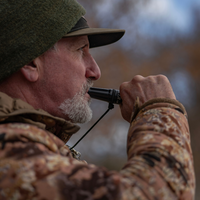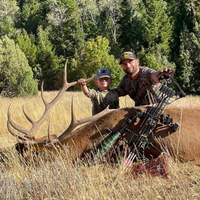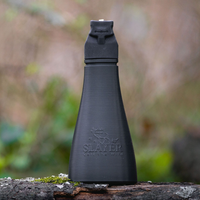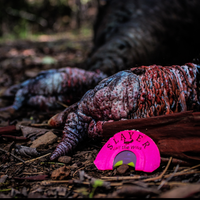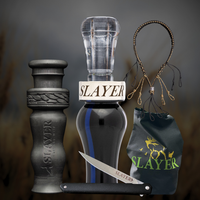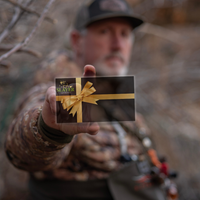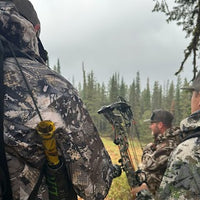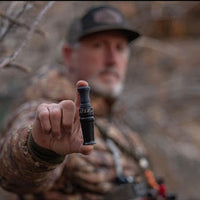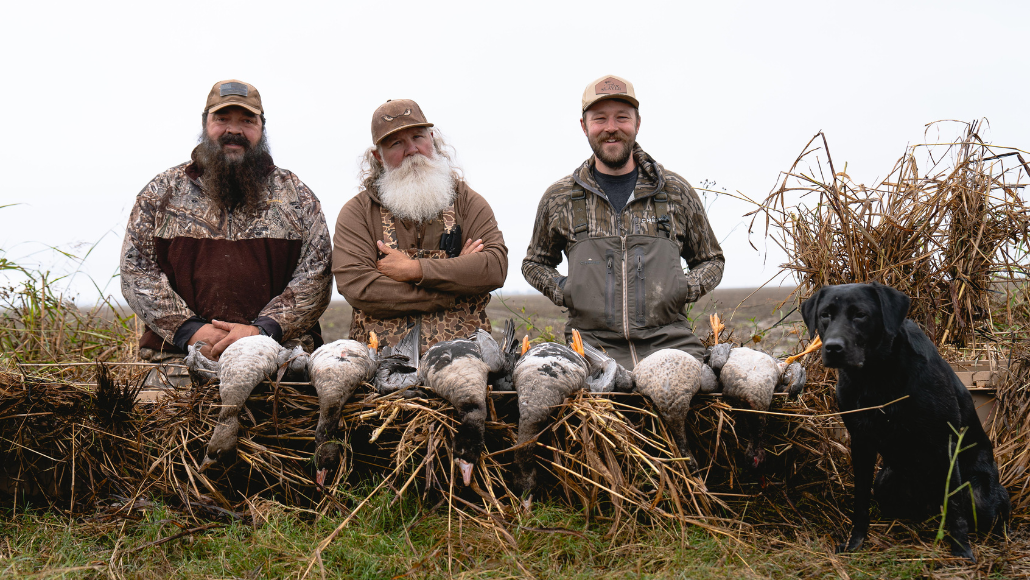Mastering cadence, conversation, and control with the new Rice Wrecker Speck Call
The big question
Every speck hunter has wondered: how much calling is too much? Some hunters can’t stop yodeling from the moment birds appear, while others throw just a few subtle clucks and let their hide do the work.
The truth lies somewhere in between. Calling specks isn’t about volume — it’s about conversation. And the hunters who learn to read the birds, match their tone, and run their call with control are the ones who finish more geese in the hole.
Specks don’t want a speech — they want a dialogue
White-fronted geese are social, vocal birds. They love a back-and-forth — a real chat. Unlike honkers or snows, specks aren’t impressed by long moans or endless wails. They respond to short, crisp bursts of air that sound like a goose actually talking.
Start the conversation with a clean two-note yodel — that “wa-wa” or “oot-oot” rhythm that grabs their attention. Once they answer, switch gears into clucks, murmurs, and little squeaks that sound like a contented flock on the ground.
The key? Keep it conversational. If they’re talking, you should be too.

When to keep talking
If the birds are responding — dropping altitude, circling tight, or answering your yodel — stay in the conversation. Those are engaged birds. Continue calling until the moment you shoot.
You’re not trying to overpower them; you’re trying to hold their attention. A steady cadence of yodels and clucks keeps them focused on your spread and less likely to drift toward another flock or field.
When to back off
But when specks already locked up — wings cupped, heads down, feet thinking about dropping — that’s when restraint kills.
Ease off the gas. Let the decoys, wind, and realism of your spread finish them. A few soft murmurs or quiet clucks are enough to keep them calm. Overdoing it in that final 40 yards can make a wary bird flare.
What the birds tell you
Reading the flock is half the battle. Watch for:
-
Altitude trends: Are they stepping down each pass? Good. Stay conversational. If they hold high or slide wide, spike your intensity with quicker clucks or a sharper yodel.
-
Wing language: Relaxed, cupped wings mean they’re buying it; fast flaps out and away mean they’re unsure.
- The leader: Every group has a talker. Mimic and mirror that one bird. If the “boss” responds, the rest will follow.
Built for the rice fields: The Rice Wrecker Speck Call
Meet the Rice Wrecker — Slayer’s newest speck call, tuned for rice-field hunters and designed to make that natural conversation easier than ever.
“Most speck calls make new hunters work too hard to find the sweet spot,” says Slayer founder Bill Ayer. “The Rice Wrecker builds that back pressure in for you — so you can run clean air, one-handed, and focus on rhythm instead of wrestling the call.”
The call’s constricted exhaust provides consistent back pressure, giving you effortless control from loud attention-getting yodels to soft finishing murmurs. Its wide tonal range covers the full vocabulary of a speck — clear, sharp, and raspy where it counts.
That design gives hunters more flexibility in the field: call aggressively when birds are distant, then instantly tone down as they lock in.
Practice the conversation
You don’t need to call non-stop — but you do need to sound believable. Try this pattern before your next hunt:
- At distance: Two-note yodel to hail and grab attention.
- As they respond: Short cluck runs — “kut, kut-kut-kut” — to mimic chatter.
- If they stall or flare: Add intensity; quicker tempo, slightly higher pitch.
- Once committed: Soft murmurs, occasional cluck. Let them land.
The Rice Wrecker’s smooth back pressure and easy airflow let you move through those phases seamlessly without overblowing or losing tone.
Final thoughts
There’s no single rule for “how much to call.” The most effective hunters read and react — using a realistic cadence that fits the birds’ energy.
Start strong, adjust mid-approach, and finish quiet. And use a call that helps you sound like a speck, not like someone trying too hard to be one.
This season, make your calling easier — and your finishes cleaner — with the Rice Wrecker Speck Call. “You don’t have to call non-stop,” says Ayer. “You just have to sound alive.”
Ready to round out your spread? Check out Slayer’s complete collection of goose calls.
